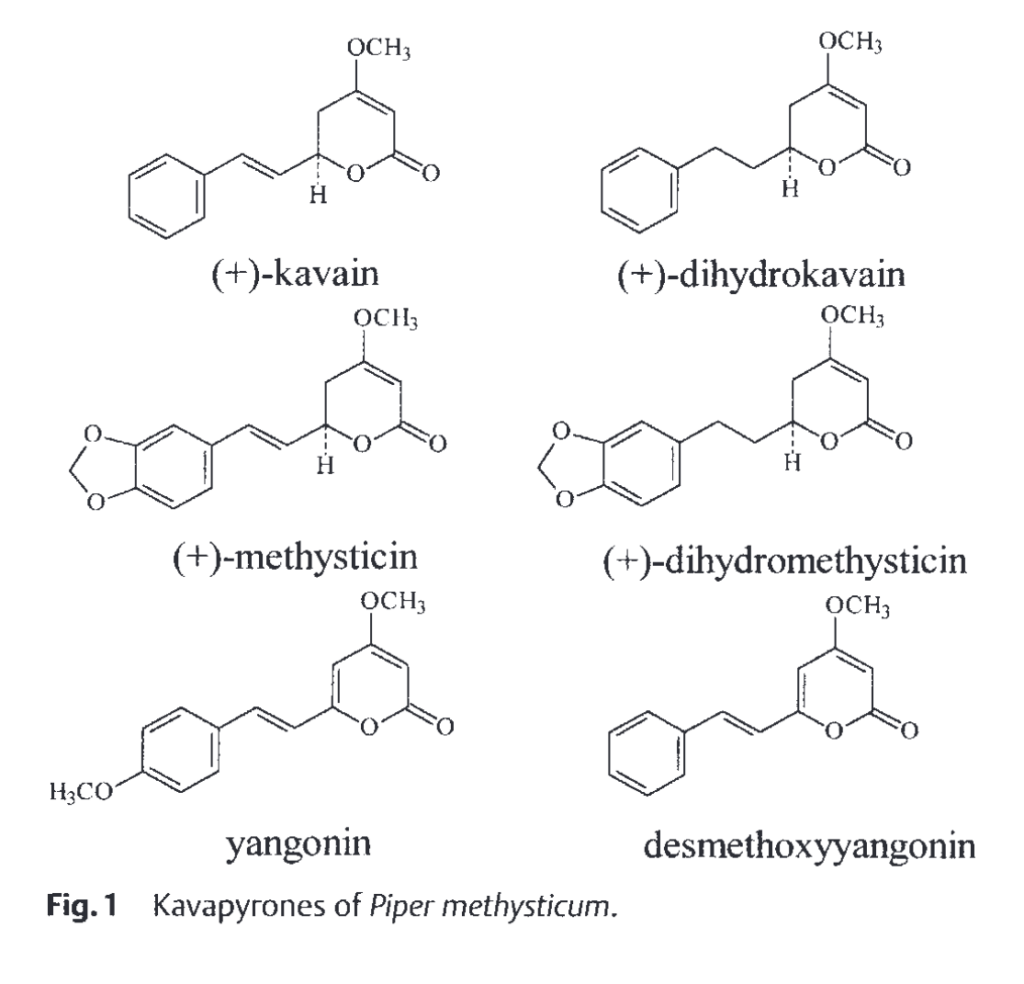A summary of: Influence of Genuine Kavapyrone (Kavalactone) Enantiomers on the GABA-A Binding Site.

Citation:
Boonen, Georg, and Hanns Hberlein. 1998. “Influence of Genuine Kavapyrone Enantiomers on the GABAA Binding Site.” Planta Medica 64: 504–6. https://doi.org/10.1055/s-2006-957502.
Full Summary:
The document under review delves into the intricate pharmacological aspects of kava, a plant known for its psychoactive properties. The primary focus of the study is on kavalactones, the active compounds found in kava, and their interaction—or lack thereof—with the GABAA and benzodiazepine receptors. This is a significant area of research, given the increasing popularity of kava as an alternative to conventional anxiolytics and sedatives.
Background and Context
Kava has been traditionally used in various cultures for its calming and relaxing effects. However, the scientific community has been divided on how exactly kava produces these effects. One of the prevailing theories has been that kava’s effects are due to its interaction with the GABAA and benzodiazepine receptors in the central nervous system. This study aims to challenge this commonly held belief by investigating the pharmacological activities of kavalactones, including kavain, dihydrokavain, methysticin, and dihydromethysticin.
Methodology
The study employs a range of scientific methods, including radioreceptor assays, to explore the interaction between kavalactones and these receptors. The document mentions that the concentrations used in the study are consistent with those found in pharmacokinetic evaluations of kavalactones in human volunteers. This adds a layer of reliability to the findings, as it ensures that the study’s conditions closely mimic real-world scenarios.
Key Findings
One of the most striking findings of the study is that kavalactones do not have a direct interaction with the benzodiazepine or GABAA receptor. This is a significant revelation, as it contradicts a large body of thought that suggested otherwise. Instead, the study proposes that kavalactones may interact with lipids in the microenvironment surrounding these receptors. This interaction is thought to be non-specific but could still influence the receptor’s activity.
Implications and Interpretations
The study’s findings have far-reaching implications for both the scientific community and consumers of kava. For researchers, it opens up new avenues for exploring the pharmacological mechanisms behind kava’s effects. It suggests that the interaction between kavalactones and the central nervous system is more complex than previously thought, warranting further investigation.
For consumers, particularly those who use kava as an alternative to benzodiazepines or other anxiolytics, the study provides valuable insights. It suggests that while kava may produce similar effects to benzodiazepines, the underlying mechanisms are different. This could be particularly relevant for individuals concerned about the addictive potential of benzodiazepines, as the study suggests that kava may offer a different pathway to relaxation and anxiety relief.
Contradictions and Controversies
The study also acknowledges the existence of previous research that yielded different results regarding kava’s interaction with the GABAA and benzodiazepine receptors. Some of these studies indicated a specific interaction, while others, like the current study, refute that claim. This highlights the need for further research to reconcile these conflicting findings and arrive at a more definitive understanding of kava’s pharmacological activities. It should be known, however, that subsequent studies have also confirmed the lack of activity at this location.
Conclusion
In summary, the study provides a comprehensive and thought-provoking look into the pharmacological activities of kava, particularly focusing on kavalactones. It challenges the prevailing notion that kavalactones directly interact with benzodiazepine or GABAA receptors, suggesting instead that the interaction may be more complex and possibly involves lipids surrounding the receptor complex. The study opens up new avenues for research and offers valuable insights for both scientists and consumers interested in the effects and mechanisms of kava.



